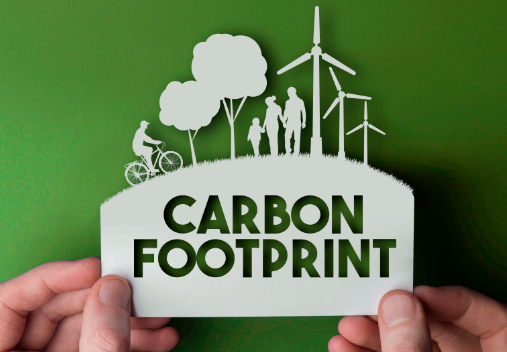Reducing Your Carbon Footprint: 21 Tips for a Greener Lifestyle, all part of Carbon Literacy Training
- icjones45
- Jan 10, 2024
- 3 min read
In a world increasingly aware of climate change, reducing our carbon footprint has become a pressing concern. This article explores practical tips to cut your carbon emissions by 50%, spanning various aspects of life – from home and work to school and travel. It’s all a part of our Carbon Literacy Training.
To find out more about Carbon Literacy Training click here: Carbon Literacy Training
1. Insulate Your Home
Insulation: A small investment for big energy savings.
Retaining heat: Eco-friendly and cost-effective.
2. Switch to Renewables
Renewable energy providers: Making a sustainable switch.
Solar panels: Harnessing the power of the sun for a cleaner home.
3. Buy Energy Efficient
Informed choices: A guide to energy-efficient appliances.
Unplug and save: Small actions, significant impact.
4. Use Less Water
Water conservation: A dual benefit for the environment.
Small changes, big impact: Easy water-saving habits.
5. Change Your Diet
Plant-based power: Reducing your carbon footprint through mindful eating.
Local choices: Supporting the environment and your community.
How to Reduce Your Carbon Footprint at Work.
To find out more about Carbon Literacy Training click here: Carbon Literacy Training
6. Turn Off the Lights
Illuminating savings: The impact of powering empty spaces.
LED bulbs and automation: Modern solutions for energy efficiency.
7. Go Digital
Embracing technology: From cloud collaboration to video conferencing.
Email etiquette: Minimizing the digital carbon footprint.
8. Get Certified
Carbon Neutral accreditation: A roadmap for corporate sustainability.
Business benefits: Attracting talent and customers through eco-conscious practices.
9. Cycle to Work
Green commuting: Choosing health and sustainability.
Employer support: Bike purchase schemes for a pedal-powered commute.
10. Reduce, Reuse, Recycle
Waste reduction: A comprehensive guide for businesses.
Plastic-free workspace: Eliminating single-use plastics for a cleaner environment.
How to Reduce Your Carbon Footprint at School:
To find out more about Carbon Literacy Training click here: Carbon Literacy Training
11. Raise Awareness
Educational initiatives: Fundraising and projects for environmental education.
Empowering communities: Spreading awareness to reduce collective footprints.
12. Compost
Waste reduction at school: The benefits of composting.
Green gardens: Utilizing compost for sustainable school landscapes.
13. Switch Off Computers
Energy-efficient schools: Managing electronic devices for reduced bills.
Unplugged classrooms: A step towards a greener educational institution.
14. Use Local Food
Sustainable school lunches: The impact of local and seasonal choices.
Supporting local economies: A win-win for the environment and community.
15. Take Local Trips
Field trips with a purpose: Reducing carbon emissions through local exploration.
Community contribution: A sustainable approach to educational excursions.
How to Reduce Your Carbon Footprint When Travelling.
To find out more about Carbon Literacy Training click here: Carbon Literacy Training
16. Use Public Transport
Green commuting on the go: The benefits of buses, trains, and coaches.
Shared emissions: Maximizing sustainability through public transport.
17. Fly Direct
Air travel emissions: The significance of non-stop flights.
Sustainable skies: A conscious choice for eco-friendly travel.
18. Offset Your Carbon
Carbon offset programs: Contributing to global sustainability initiatives.
Responsible travel: A financial investment in a greener future.
19. Pack a Water Bottle
Reusable travel essentials: Reducing single-use plastic while on the move.
Eco-friendly hydration: A simple step towards sustainable travel.
20. Think Green
Green tourism: Making ethical choices for accommodation and activities.
Mindful travel: Leaving a light carbon footprint in every destination.
21. Conclusion
Collective impact: Small changes for a greener planet.
Commitment to change: Embracing a sustainable lifestyle.
FAQs
How does insulation reduce carbon emissions at home?
Insulation minimizes the need for excessive heating or cooling, reducing energy consumption and carbon emissions.
Why is cycling to work environmentally friendly?
Cycling produces zero emissions, promoting personal health and contributing to a cleaner environment.
How can schools benefit from composting?
Composting reduces landfill methane emissions, provides free compost for gardens, and promotes waste reduction.
What is the significance of flying directly to reduce carbon emissions?
Non-stop flights have a lower carbon footprint compared to flights with multiple stops, reducing overall emissions.
How do carbon offset programs work in travel?
Carbon offset programs involve paying extra to fund projects aimed at reducing the carbon footprint of travel.
Carbon Literacy Training
Carbon Literacy Training is a great way to start your journey towards carbon net zero. It is a way to engage you staff and encourage then to help you identify ways to reduce your carbon emissions and very often reduce your business expenses. To find out more about Carbon Literacy Training click here: Carbon Literacy Training
Special Offer to Businesses
We are keen to help as many people as possible become Carbon Literate. To make this financially viable for the businesses we will consider accepting payment for the training in the form of inventory or store gift cards. By doing this we reduce the cash expense to the business, move some inventory and we receive value for our efforts. For more information about this please contact me at ian@positivecarbonimpact.com
To find out more about Carbon Literacy Training click here: Carbon Literacy Training










Comments